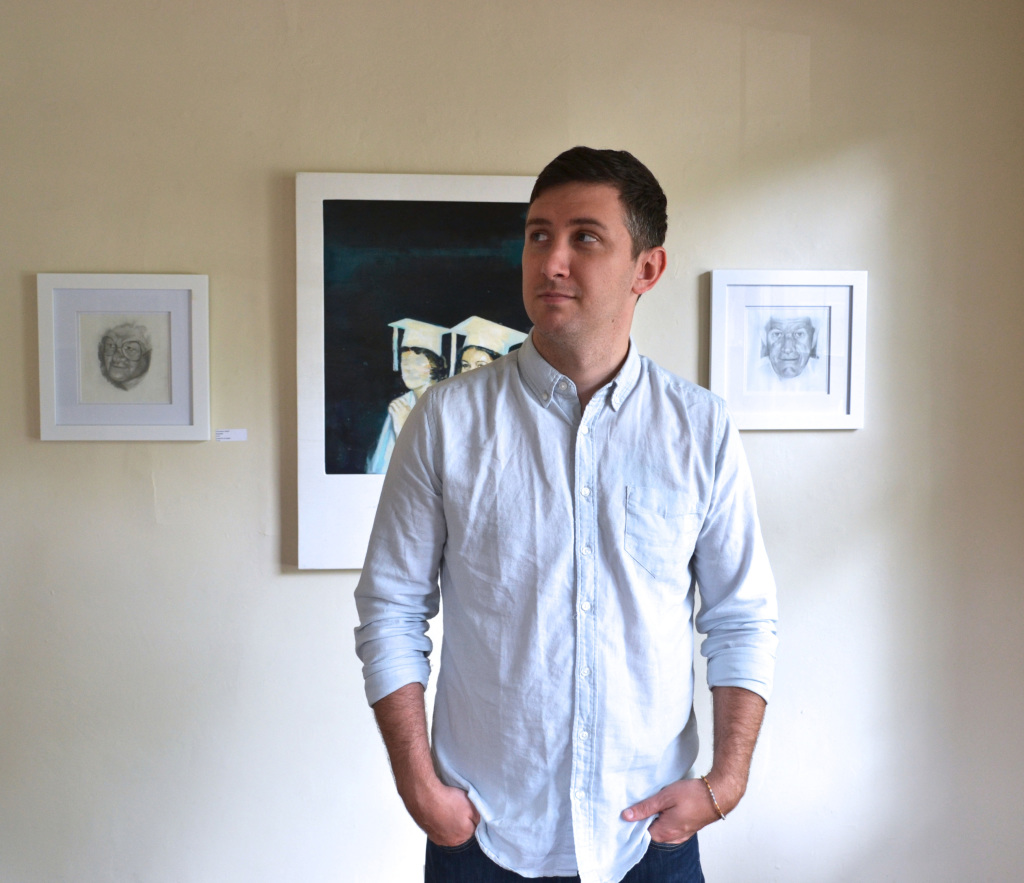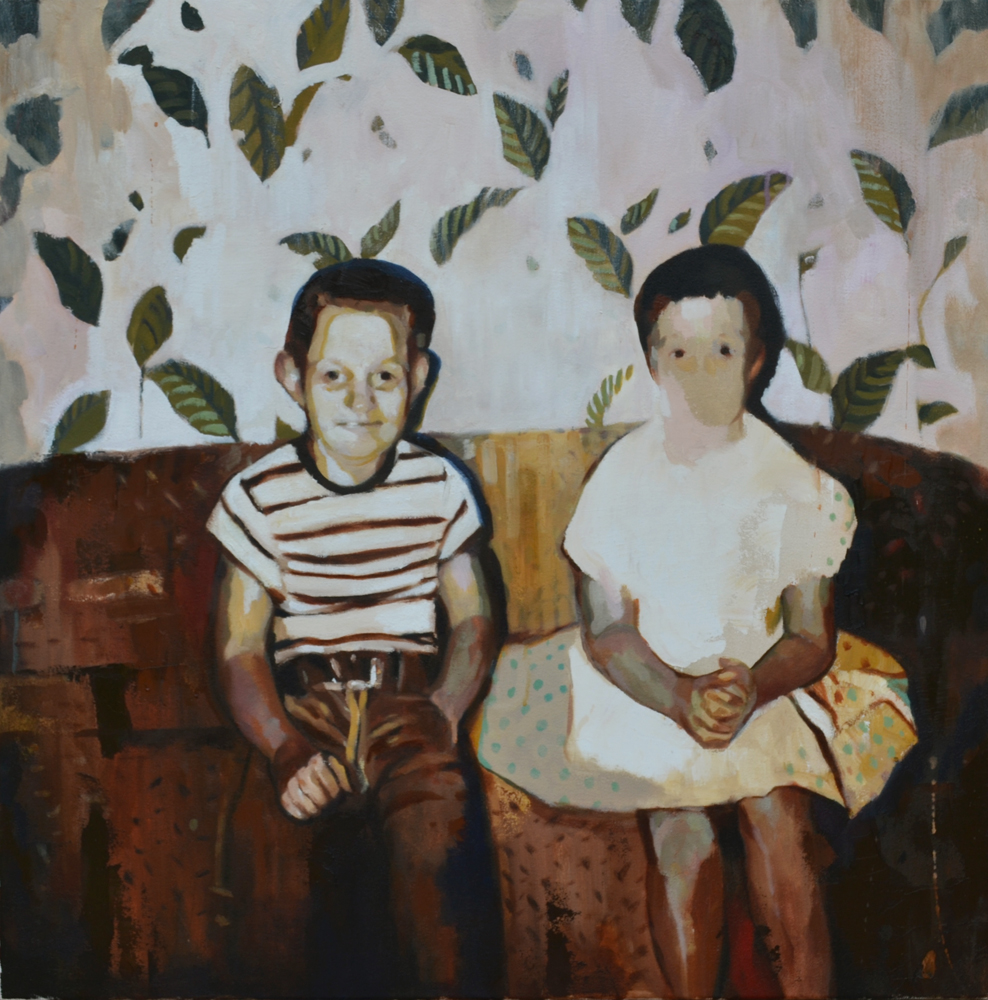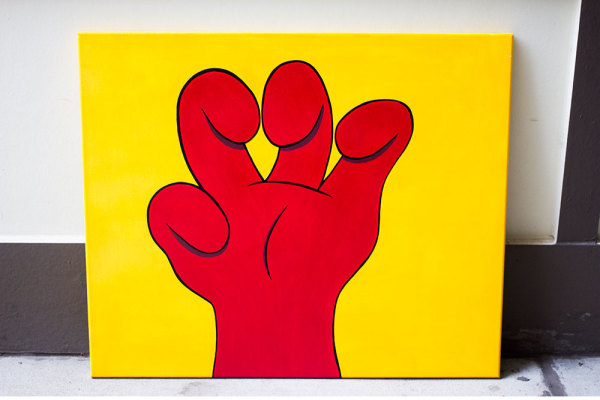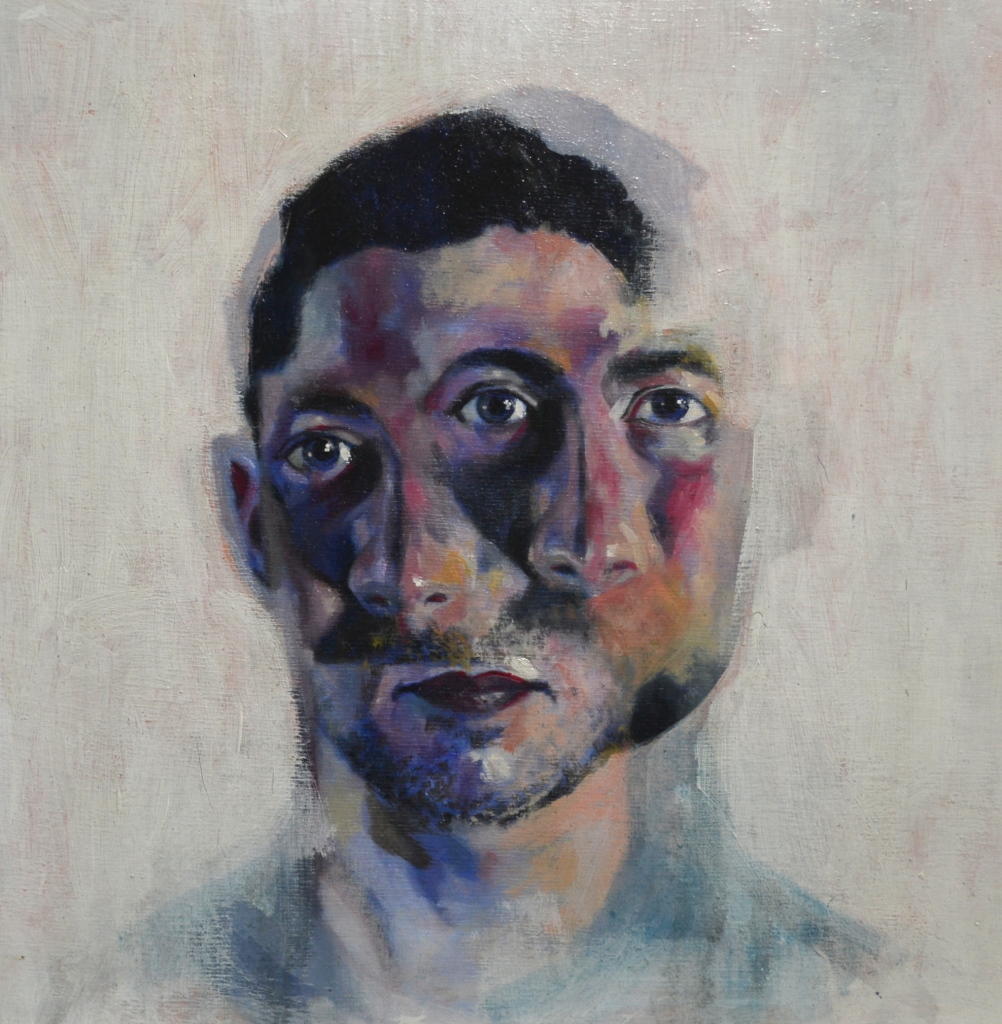 Although the word “evocative” is often bandied about to describe art, it’s not everyday that you actually see art that warrants the term. Yet that’s precisely the word that came to mind when I first saw artist Johnathan Welsh’s paintings at Kibbee Gallery in 2012. Welsh paints elegiac portraits that manage to show both beauty and conflict relating to themes such as family, religion, class and the South.
Although the word “evocative” is often bandied about to describe art, it’s not everyday that you actually see art that warrants the term. Yet that’s precisely the word that came to mind when I first saw artist Johnathan Welsh’s paintings at Kibbee Gallery in 2012. Welsh paints elegiac portraits that manage to show both beauty and conflict relating to themes such as family, religion, class and the South.
Although he’s only been painting professionally for the past five years, the Atlanta native has always had an artistic bent. After deciding to pursue a career as a serious artist, Welsh earned a Bachelor’s of Fine Art degree from Kennesaw State University in 2011. Since then, his work has been shown all over the city, including the High Museum of Art’s Education Wing, King Plow Art Center and Kibbee Gallery, among others. He was also selected for a Walthall Artist Fellowship from WonderRoot in 2012. Most recently, he was one of the local artists selected for this year’s Living Walls Conference.
CommonCreativ talked to Welsh about his work, what inspires him and his thoughts on the Atlanta art scene.
CommonCreativ: When did you first become interested in art?
Johnathan Welsh: I’ve always been into art. As a kid, I was always drawing cartoon characters and other people. Art was something I was good at and that I liked doing.
CC: How did you become a painter?
JW: I took up painting in college—I went to back to school to study art. When I graduated from high school, I went to college briefly, but I wound up dropping out because I wasn’t really focused. I had to get a job and work to survive. I worked a horrible retail job for years, and saw I wasn’t progressing at all. I decided college was the best way to do that. I went to Kennesaw State and, because I loved art and was always good at it, that’s what I decided to study. I chose painting out of the concentrations because I was drawn to the color, flat surfaces and draftsmanship of it.
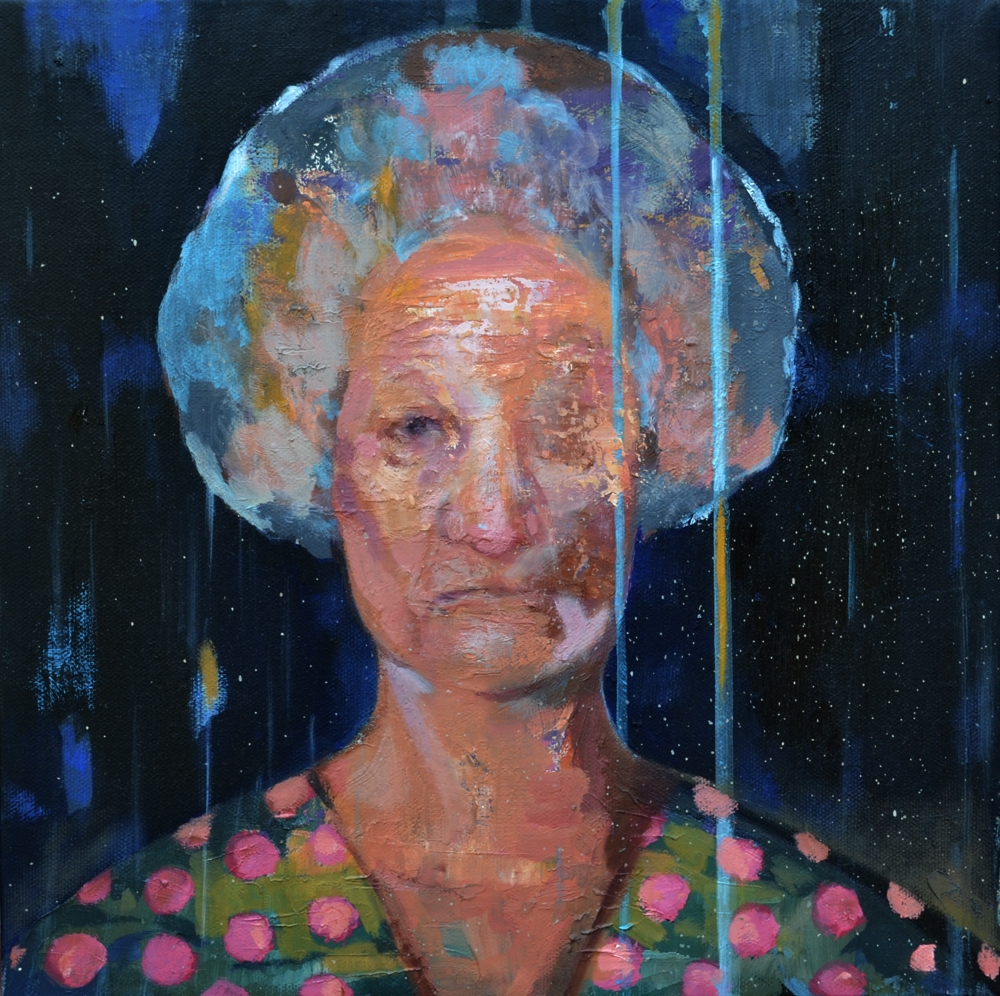 CC: How has your background shaped you as an artist?
CC: How has your background shaped you as an artist?
JW: I think growing up the way I did made me more entrepreneurial. I have always been sort of self-reliant and motivated to better my position in life. I think that’s been a plus because nobody really shows you how to be successful as an artist. The road map is a little different for everybody so you have to be willing to wander and take risks.
CC: What’s your creative process like?
JW: I start out by sourcing images. Everything I do is photo-based. I may take the photographs or I may find them somewhere else. I take the image and then manipulate it in some way. From there, I go straight to the canvas to destroy the image and repaint it. Destroy and repaint. It’s very cathartic. I’m not a hyper realistic painter. I use pieces of the images and make it my own.
JW: The subject matter I’m drawn to is all about the human condition and exploring narratives related to all the crazy things I saw growing up. I’m drawn to narratives that I’m familiar with and that I grew up around, like poor people and the South. In the future, I plan to look at religion and race. I don’t want to tell the viewer how to feel or make a judgement call. I want to show a story and expose them to it, mostly because the art world has not been accessible to the masses or the poor for a long time. It’s been for queens, popes, kings, heroes, angels, gods.
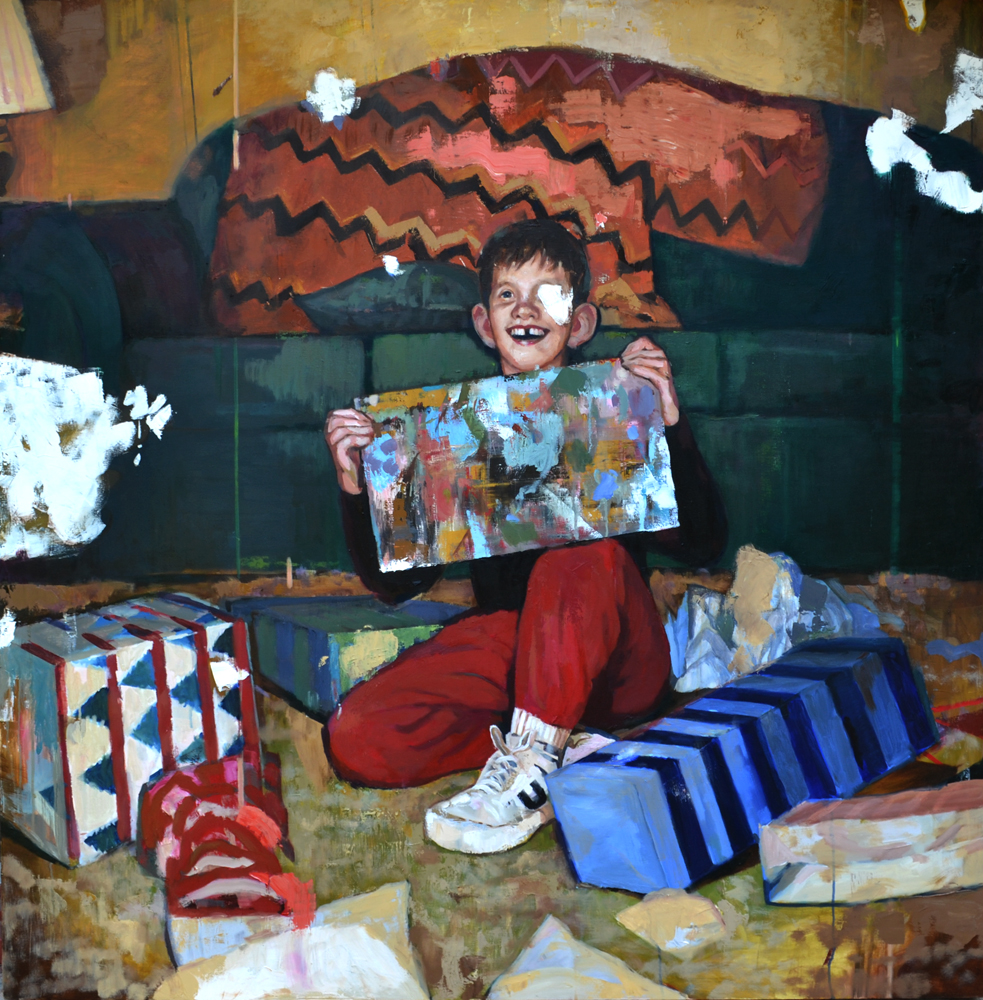 CC: As a painter, what are you most proud of?
CC: As a painter, what are you most proud of?
JW: Being a part of Living Walls was huge. I was completely out of my comfort zone. It [called for using] the biggest materials, and I wasn’t comfortable with the spray paint. The scale of it was a huge challenge and that made it interesting. On a smaller scale, I am proud of my individual stepping stones towards improvement. I’m always motivated to get better and overcome my own insecurities about my work.
CC: How do you promote yourself as an artist?
JW: The same way a lot of people do these days: I post work to Instagram, Facebook and Tumblr. I also just get out and meet other people interested in art. I’ve found the best way to get opportunities is just by knowing a lot of people and not being a dick. The Atlanta art scene is pretty friendly and easy to access if you just make a little effort and are not too pushy or weird.
CC: How do you feel about Atlanta’s current art scene?
JW: Right now it’s pretty amazing. It feels like the city is taking a more active role in trying to promote arts. When I was first starting out, there were not a lot to get involved with. Now there’s a ridiculous amount.
CC: Where do you go to see up and coming art in Atlanta?
JW: Atlanta is a great place to find new artists. I like Kibbee Gallery, Beep Beep Gallery and Mint Gallery to name a few. I also really enjoy Flux Projects, Elevate Projects and Art on the BeltLine. And the Dashboard Co-Op shows are always awesome.
CC: Why do you make art?
JW: I make art because I feel compelled to. I’m a reactionary painter. I paint things that I’m compelled to paint. My last series was about my family. My dad was sick, and I was hyper focused on that. Part of the process is I have to absorb all this stuff and put it back out into the world to get it out of my head. It’s an outlet, a coping thing. It’s a way to deal with my anxiety and nervous energy.
You can see more of Jonathan Welsh’s work on his site.

